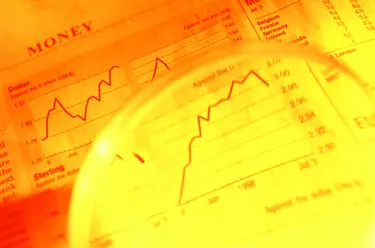
Return on equity, or ROE, and a stock's return are both frequently discussed among analysts. These concepts are related but substantially different ways of viewing the performance of a company. Return on equity compares accounting profit to owner's equity, whereas stock returns measure the value shareholders receive against the price they paid for shares. The purchase price does not always reflect the value of equity. Return on equity and stock returns often differ, because prices do not move in lock step with a company's accounting results.
Defining ROE
Video of the Day
Return on equity is a measure of the profitability of a company's equity capital. This accounting measure is calculated by dividing company income by its average shareholders' equity over the accounting period. ROE is effectively the rate at which the accounting value of equity is growing.
Video of the Day
ROE Drivers
The various drivers that contribute toward the ROE include operating factors, such as profit margin and sales. Increasing profit margins and sales increase ROE. Financial factors, such as debt financing, and the effective tax rate also play a role in determining ROE. Lower taxes and greater leverage increase returns to equity. ROE helps us understand how all these factors have come together and whether they are growing or shrinking owner's equity.
Defining Stock Returns
Stockholders can benefit from holding a stock over a given period if the stock can be sold at a greater price or if dividends are paid directly to the owners. Total return is the sum of the share price change and total dividends divided by the initial stock price. Total return combines capital appreciation and dividend payments, comparing them to the price of stock at the beginning of the period. It is a rate of return or yield that investors enjoy directly by holding the stock.
Total Return Drivers
Total return is driven by how much investors will pay for shares in the future and by the company's dividend policy. Other investors are a stock's future buyers, and their views of the stock change as new information becomes available. They adjust how they value shares based on their forecasts for the company's future prospects. In contrast, dividend payments increase total return without relying on investor sentiment. Company management determines dividend policy.
Key Differences
ROE may be substantially different from a stock investor's total returns. ROE is an accounting metric based on past performance, while stock returns reflect expectations for future performance -- expectations often based on factors that do not appear in financial statements, such as customer loyalty or internally developed patents.